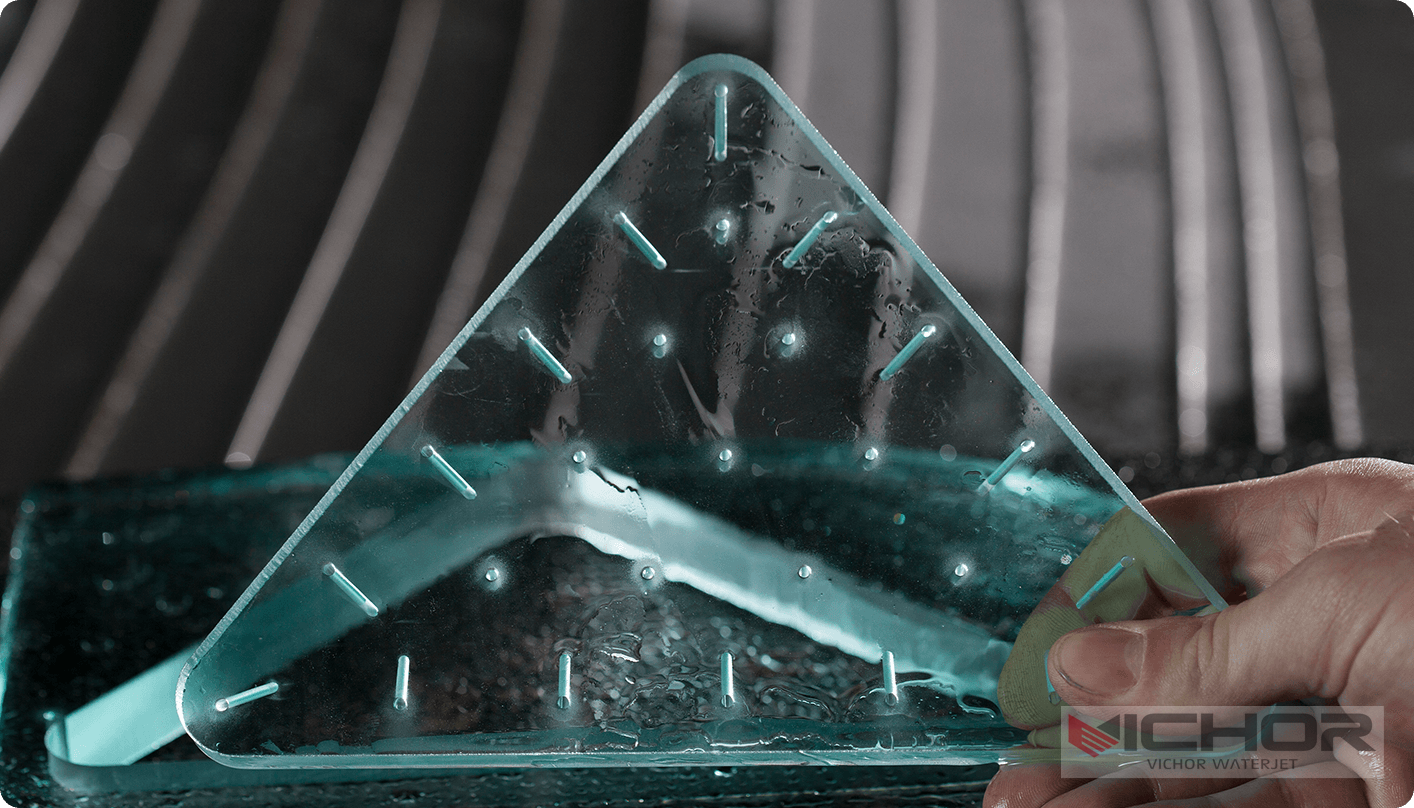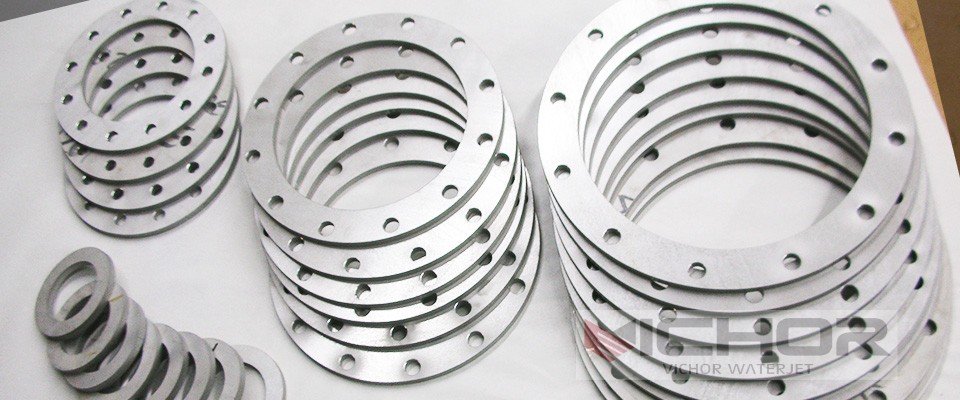
7 Key Advantages of Water Jet Metal Cutting Machines: Precision Without Compromise
In the demanding world of metal fabrication, achieving precise, clean cuts without compromising material integrity is paramount. While laser, plasma, and traditional mechanical cutting have their places, water jet metal cutting machines have surged in popularity for their unique capabilities. This powerful technology harnesses the sheer force of high-pressure water, often mixed with abrasive garnet, to slice through virtually any metal with astonishing accuracy and minimal thermal distortion. If you’re exploring cutting solutions, understanding the water jet metal cutting machine is crucial. Here are 7 key advantages that make this technology indispensable:
1. Unmatched Versatility: Cutting Virtually Any Metal (and More!)
The foremost advantage of a water jet metal cutting machine is its extraordinary material versatility. Unlike thermal processes (laser, plasma) that struggle with reflective or heat-sensitive materials, or mechanical methods limited by tool hardness, waterjet cutting is fundamentally a mechanical erosion process.
Metal Mastery: Waterjets excel at cutting:
Hard Metals: Titanium, Inconel, tool steel, armor plate, hardened steel.
Reflective Metals: Aluminum, copper, brass (no reflection issues like with lasers).
Exotic Alloys: Hastelloy, Monel, tungsten carbide composites.
Thick & Thin: From foil-thin shims (using pure waterjet) to slabs exceeding 12 inches (300mm+) thick with abrasive, all on the same water jet metal cutting machine.
Beyond Metal: Crucially, the same machine can cut stone, glass, composites, rubber, plastics, ceramics, foam, and food. This makes a water jet metal cutting machine incredibly valuable for job shops handling diverse materials or manufacturers needing flexibility.
The water jet metal cutting machine eliminates the need for multiple dedicated cutting systems for different materials, streamlining production and reducing capital expenditure.
2. The Science Behind the Stream: How Waterjets Work
Understanding the core technology reveals why the water jet metal cutting machine is so effective. The process involves several key components working in concert:
High-Pressure Pump: The heart of the system. Ultra-high-pressure intensifier pumps (commonly 60,000 PSI / 4,100 bar, up to 90,000+ PSI / 6,200 bar) pressurize ordinary tap water. Electric direct-drive pumps are also becoming prominent.
Abrasive Delivery System (For Metal Cutting): For cutting metals and hard materials, fine garnet abrasive (typically 80 mesh) is precisely metered into a mixing chamber within the cutting head.
Cutting Head: High-pressure water enters the head. For abrasive cutting, it accelerates through a narrow orifice (typically diamond or sapphire) to form a coherent, supersonic stream. Abrasive is drawn into this stream in the mixing tube, where the particles are accelerated. The abrasive-laden stream then exits through a precisely sized nozzle (usually carbide or ceramic), focusing the cutting energy.
Motion System: A robust CNC-controlled gantry (X-Y-Z axes) precisely moves the cutting head over the workpiece according to the programmed design, enabling complex shapes.
Catcher Tank: Located beneath the cutting table, it contains the high-energy stream after it cuts through the material, dissipating its energy safely and collecting the water and spent abrasive slurry for recycling/disposal.
This combination of extreme pressure and abrasive acceleration creates a highly focused cutting tool capable of eroding material particle by particle within the water jet metal cutting machine.
3. Precision and Edge Quality: The Hallmarks of Waterjet Cutting
When it comes to accuracy and cut quality, the water jet metal cutting machine sets a high standard, particularly for metals where thermal damage is unacceptable.
Exceptional Accuracy: Modern CNC-controlled water jet metal cutting machines achieve positioning accuracies within +/- 0.001 inches (0.03mm) and repeatability even tighter. Dynamic waterjet control systems compensate for taper (a slight widening of the kerf towards the bottom of thick cuts), further enhancing dimensional accuracy.
Superior Edge Quality: The cold-cutting nature of waterjet is its defining quality advantage over thermal processes:
Zero Heat-Affected Zone (HAZ): No thermal stress, hardening, annealing, or microstructural changes occur at the cut edge. This preserves the metal’s original properties, strength, and corrosion resistance – critical for aerospace, medical, and high-stress components.
Smooth Finish: The abrasive stream produces a uniformly textured, matte finish. The smoothness (Ra value) can be controlled by adjusting cutting speed, pressure, and abrasive flow rate. Slower speeds yield smoother finishes.
Minimal Burr: Waterjet cutting typically produces very little to no burr, especially compared to plasma or oxy-fuel. Any minor burr is easily removed, reducing secondary operations.
Sharp Corners & Intricate Details: The small, focused stream allows for cutting sharp inside corners and intricate geometries that are difficult or impossible with plasma or laser, especially in thicker materials. The water jet metal cutting machine excels at fine details.
4. Environmental and Safety Benefits: A Greener, Safer Cut
Operating a water jet metal cutting machine offers significant advantages regarding environmental impact and operator safety compared to many alternatives:
No Hazardous Fumes or Gases: Unlike plasma or laser cutting, which can generate toxic fumes, ozone, and metal vapors (especially from coated metals), waterjet cutting primarily produces a slurry of water and inert garnet sand. This drastically reduces the need for complex fume extraction systems and associated ventilation costs, improving shop air quality.
Minimal Fire Hazard: The process uses water as the primary medium and generates no significant heat or sparks. This eliminates fire risks when cutting flammable materials or in environments with combustible dust, a significant safety advantage of the water jet metal cutting machine.
Reduced Noise Pollution: While not silent, waterjet cutting is generally quieter than plasma cutting or high-power laser cutting, especially when enclosed.
Recyclable Abrasive: Spent garnet abrasive is non-toxic. Systems exist to collect, dry, and partially recycle the abrasive for other applications (like sandblasting), or it can be safely landfilled. Water recycling systems are also available.
No Coolants or Lubricants: The process doesn’t require the oils or chemicals often used in traditional machining, eliminating associated disposal concerns.
These factors make the water jet metal cutting machine a more sustainable and operator-friendly choice.
5. Minimal Setup and Fixturing: Streamlining Production
The water jet metal cutting machine offers operational efficiencies that save significant time and cost:
No Thermal Distortion = Simple Fixturing: Since no heat is applied, parts don’t warp during cutting. This often eliminates the need for complex, heavy-duty clamps and fixtures required for thermal processes to counteract warping. Simple weights or light clamping are usually sufficient.
Piercing Without Pre-drilling: Waterjets can pierce directly through most materials without pilot holes. The piercing technique involves starting at a lower pressure or using a “soft pierce” routine to avoid splashing and ensure a clean start hole. This saves time compared to processes requiring pre-drilled holes.
Nesting Efficiency: The narrow kerf (cutting width, typically 0.030″ to 0.050″ / 0.76mm to 1.27mm with abrasive) allows for very efficient nesting of parts on a single sheet, minimizing material waste. Advanced nesting software maximizes yield.
Single-Step Cutting: For many parts, the waterjet cut edge is the finished edge, requiring no further machining or finishing to remove HAZ or significant burr. This reduces production steps and handling.
These advantages contribute to faster job turnaround times and lower overall operating costs for the water jet metal cutting machine.
6. Applications Across Industries: Where Waterjets Shine
The unique capabilities of the water jet metal cutting machine make it essential across numerous sectors:
Aerospace: Cutting high-strength alloys (titanium, Inconel), composites, honeycomb structures, engine components with zero HAZ, preserving fatigue life. Intricate brackets and fittings.
Automotive: Prototyping, gaskets, interior trim, composite parts, suspension components, specialized tooling, and fixtures.
Architecture & Construction: Decorative metal panels, intricate facades, structural components, signage, stainless steel countertops, stone inlays.
Manufacturing & Job Shops: General fabrication, tool and die components (no hardened edge issues), machinery parts, prototypes, low-volume/high-mix production.
Medical Device: Implants (titanium, stainless steel), surgical instrument components, MRI-compatible parts (non-magnetic process), biocompatible materials – all with pristine edges.
Energy (Oil & Gas, Nuclear): Cutting tough alloys for valves, flanges, pipe supports, reactor components where HAZ is unacceptable.
Art & Sculpture: Enabling complex designs in metal, stone, and layered materials for artistic expression.
The flexibility of the water jet metal cutting machine allows it to adapt to the specific needs of each industry.
7. Considering the Investment: Costs and Operational Factors
While offering immense benefits, it’s important to understand the operational context of a water jet metal cutting machine:
Initial Investment: Purchase price is generally higher than comparable plasma systems but often competitive with or lower than high-power lasers, especially when considering the versatility across materials. Pump technology (intensifier vs. direct-drive) significantly impacts cost.
Operating Costs:
Abrasive: Garnet abrasive is the single largest consumable cost (especially for thick metal cutting). Efficient use and recycling options help manage this.
Power: High-pressure pumps consume significant electricity, though newer direct-drive pumps are more energy-efficient.
Nozzles & Orifices: Wear parts (mixing tubes, focusing nozzles, orifices) require periodic replacement. Their lifespan depends on pressure, abrasive, and material cut.
Water: Requires filtration. Water disposal/recycling costs may apply.
Maintenance: Regular maintenance of the high-pressure system, motion components, and controls is essential for optimal performance and longevity.
Cutting Speed: While incredibly versatile, waterjet cutting is generally slower than laser or plasma on thin sheet metal. However, its speed relative to other processes increases significantly as material thickness grows, especially for metals over 1/2 inch (12mm), where it often outperforms plasma in quality and can compete or outperform laser on thick, reflective, or hard metals. Speed is also highly dependent on desired edge quality.
The water jet metal cutting machine stands as a testament to innovative engineering, solving critical challenges in metal fabrication. Its ability to cut virtually any metal – regardless of hardness, reflectivity, or thickness – without inducing heat damage is unparalleled. The combination of exceptional precision, superior edge quality, environmental benefits, safety advantages, material versatility, and operational flexibility makes it an indispensable tool in modern manufacturing.
Whether you’re producing complex aerospace components, intricate architectural details, robust industrial machinery, or delicate medical devices, the cold, precise cut of the water jet metal cutting machine offers a solution that thermal processes simply cannot match. While operational costs require management, the value proposition – enabling cuts that were previously impossible or prohibitively expensive – solidifies its position as a cornerstone technology for any serious fabricator seeking precision without compromise. Investing in a water jet metal cutting machine is an investment in capability, quality, and future-proofing your manufacturing processes.
continue reading
Related Posts
- 1371 words6.9 min read
- 1449 words7.3 min read




